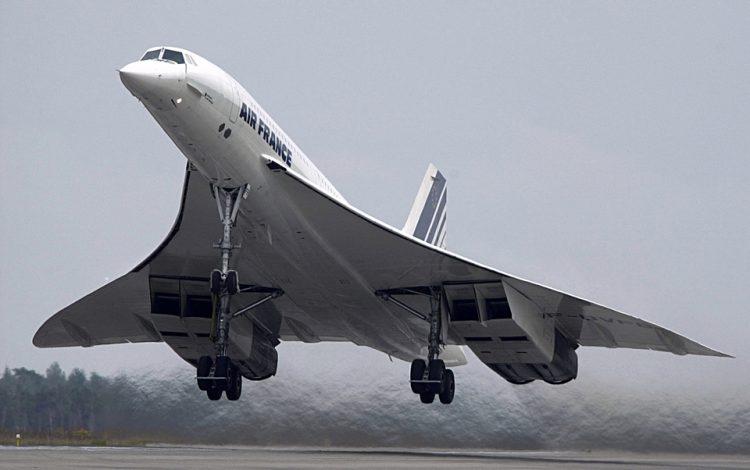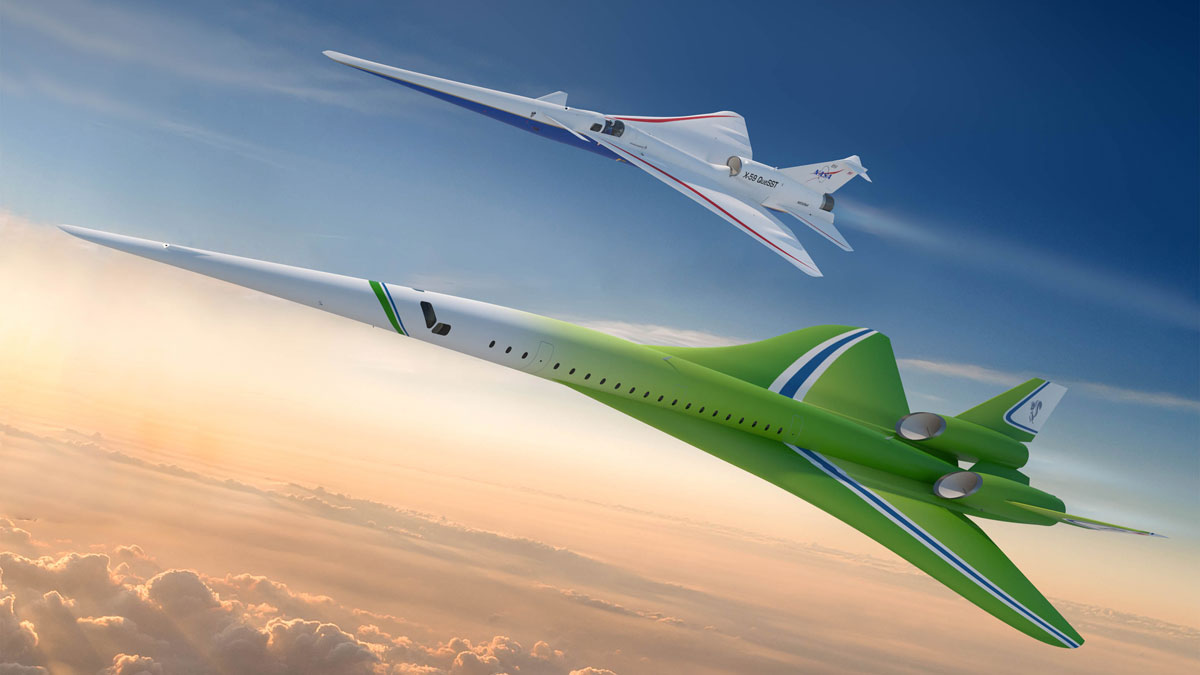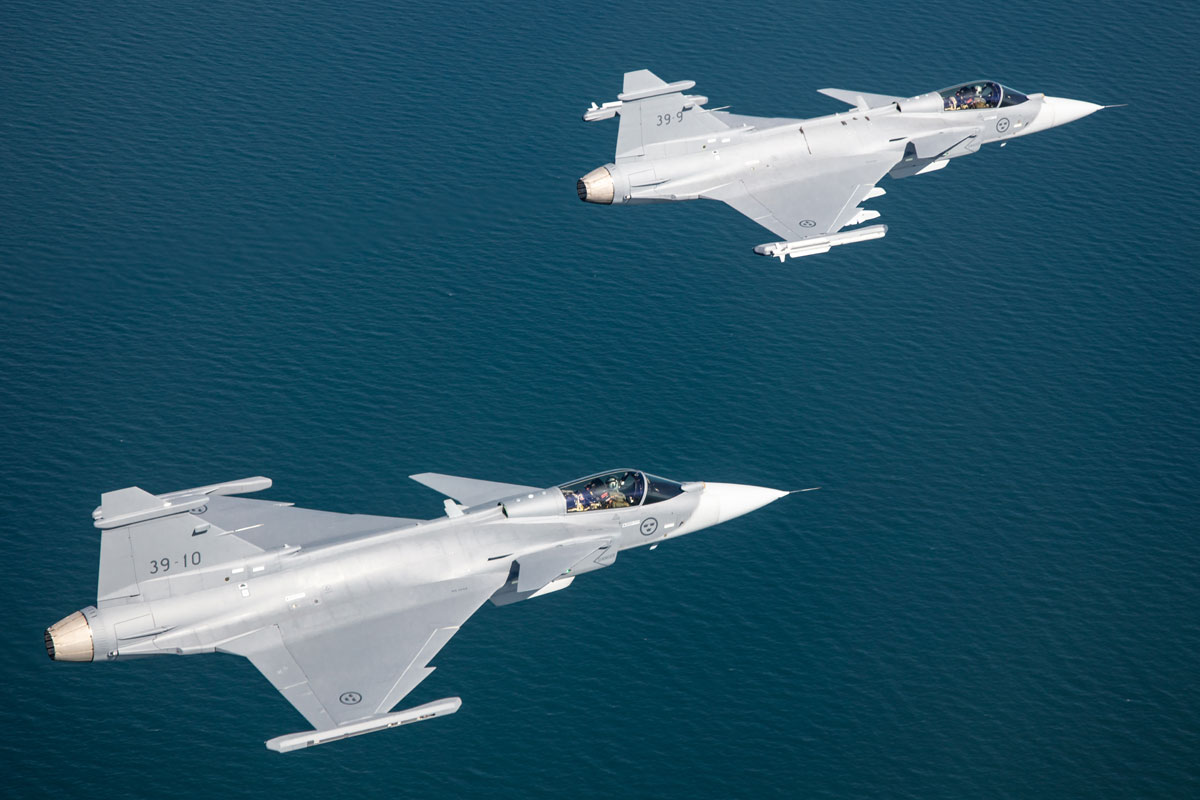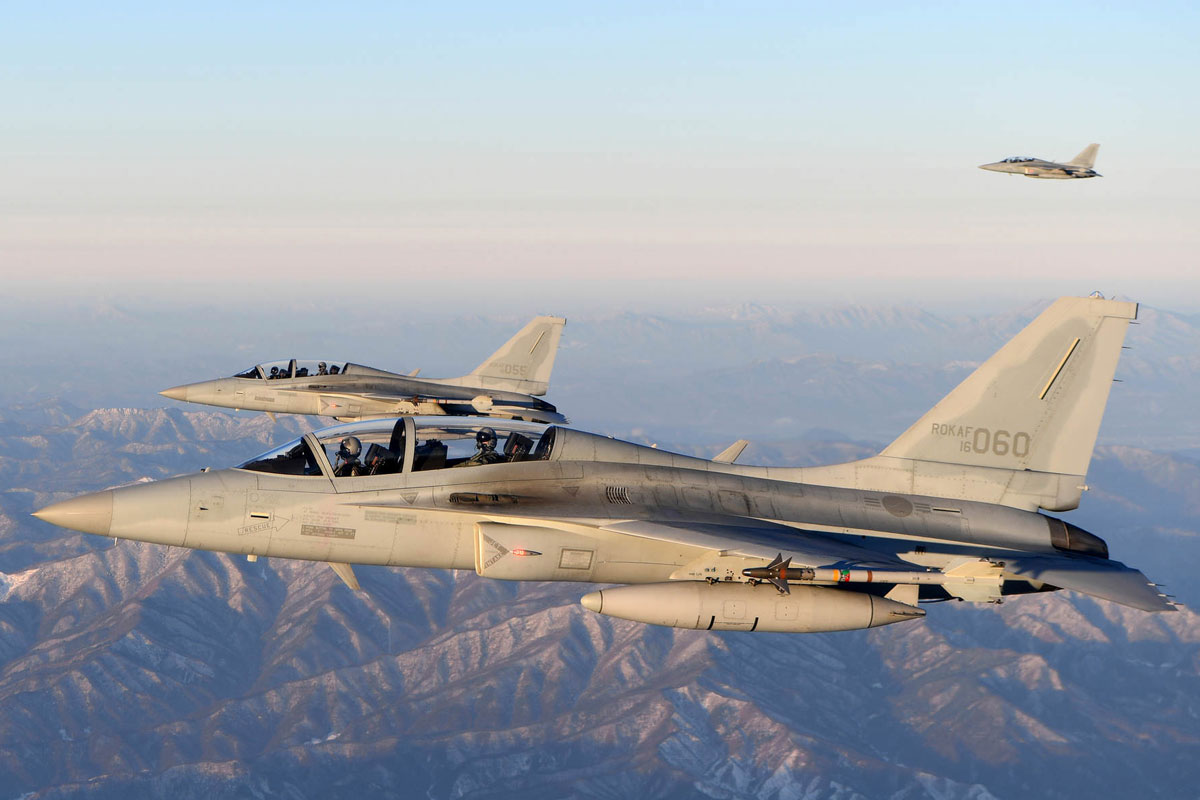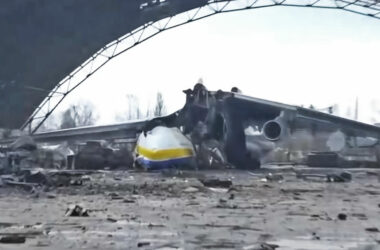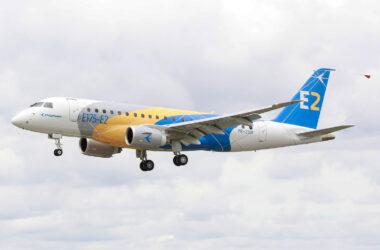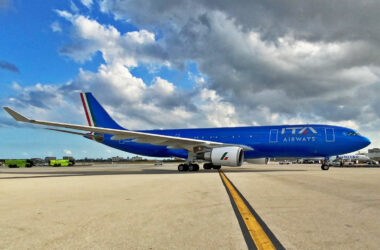Perhaps the most stunning passenger plane ever created, the Concorde is synonymous with supersonic jet for a lot of people, but perhaps that conception is never adopted again in aviation.
For years the aerospace industry has been focusing on supersonic passenger aircraft designs that are economically viable and at the same time quiet enough to overcome the sound barrier without affecting inhabited regions.
However, this is a difficult commitment at a time when newer jets are struggling to consume less and less, even if that means in practice lower performance than older designs.
But recent technological advances have made the idea come back to being possible. Among several manufacturers looking to launch supersonic civil aircraft are start-ups and also large industrial groups such as Lockheed Martin. The aerospace giant, known for its advanced military aircraft, recently unveiled a supersonic passenger jet concept.
The Lockheed proposal was based on early learning with another company’s project, the X-59, a technology demonstrator that is being assembled by the company at NASA’s request and is expected to fly only in 2021.
But advances have already been made thanks to advanced computer programs that have allowed engineers and designers to figure out ways to make the supersonic era possible in civil aviation.
One of the challenges is to make a supersonic plane quiet enough that it can fly over inhabited areas. The so-called “supersonic boom”, the moment the aircraft breaks the sound barrier, was one of the causes that made Concorde fail in the United States.
While some say that the overflight ban was a commercial move since the Americans had given up their rivals for the Anglo-French aircraft, it is a fact that the noise produced by hundreds of supersonic jets in one region would have become a major problem.
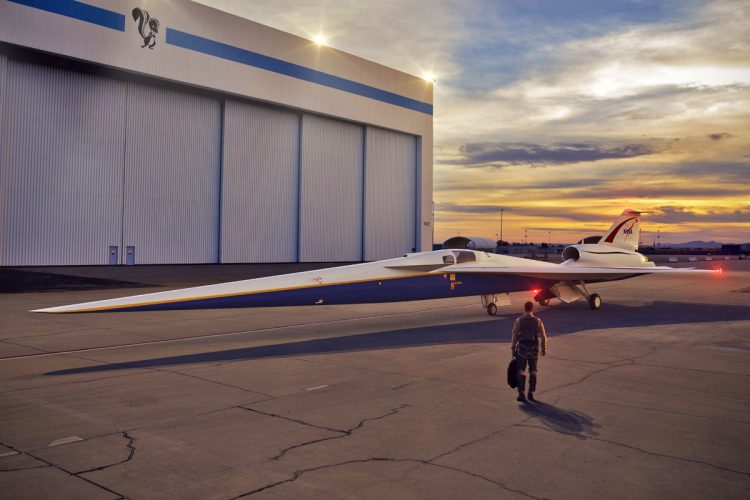
Lockheed and NASA intend not to override this effect by at least minimizing it to a level similar to that of subsonic jets. The solution will be tested precisely by the X-59, an airplane in which the wing is positioned well behind the fuselage and have the so-called natural laminar flow capable of reducing the boom. The Lockheed concept plane would also use low noise engines that would have air intakes that would minimize that impact.
But it is the design of the fuselage of the supersonic airplane of the future that lies fundamental changes in relation to the Concorde.
Fewer passengers, less speed
Its extremely thin shapes were V-tail rudders with internal motors hidden by the wings. Nearly a third of the length of the fuselage is equivalent to the nose and a third to the passenger cabin.
Unlike the Concorde, the new supersonic will not have the movable nose to facilitate the view of the pilots in takeoffs and landings. Instead, they will have a system called XVS, or External Vision System, a set of cameras capable of projecting the outside environment of the airplane into the cockpit.
The engines bring together the best of two worlds: high dilution ratio and 40,000 pounds thrust each, but without afterburner, the “military” feature of the European aircraft that burned tons of fuel per hour.
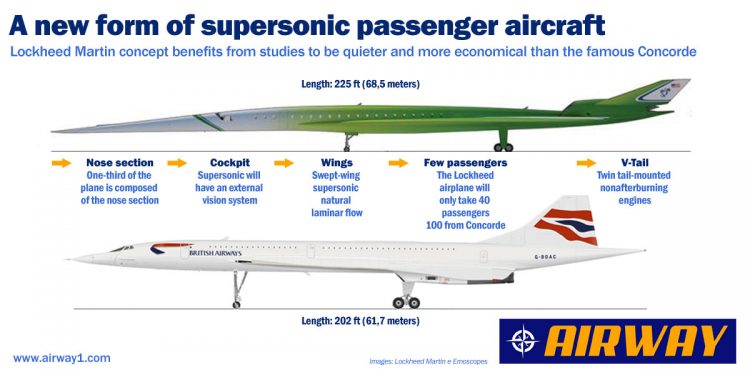
The result of this formula will be an extremely large plane, bigger than the Concorde in length, but able to take less than half of the passengers, something like 40 people in individual seats arranged in rows of two. The cargo hold will be in the rear center portion while the fuel will be carried on the wings and at the end of the fuselage. The look is like a long, dart-shaped paper airplane.
Despite this, the cruising speed will be about 10% lower than that of the Concorde. So far, studies from NASA and Lockheed indicate that surpassing the Mach 1.8 would make the plane very noisy.
In compensation, the American supersonic would be able to fly nonstop to transpacific destinations, with little more than 5,000 nautical miles of range, better than the Concorde.
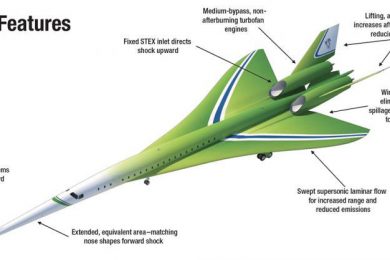
First class with wings
This aircraft, almost the length of a Boeing 747, will not be such a common presence at airports if it becomes a reality. Even if its price is acceptable it is assumed that the first customers will be large corporations or international airlines able to put it on flights between very rich cities where there would be demand for it.
Of course, routes such as London-Dubai or Paris-New York would be among the most likely to receive flights from the new supersonic.
To turn the concept into a real airplane, however, it will take some time. Lockheed Martin and NASA need to learn from the X-59 if what has been discovered so far works even in practice. From then on, it will be years before a commercial project takes shape.
But the return of supersonic flights is only a matter of time and not more of technology. Currently, going from the French capital to the largest city in the United States takes more than 7 hours, which is expected to drop to 4 hours on the Lockheed jet. It is a little more than the Concorde was able to achieve in its time, but certainly a more comfortable, profitable and, above all, silent journey.
